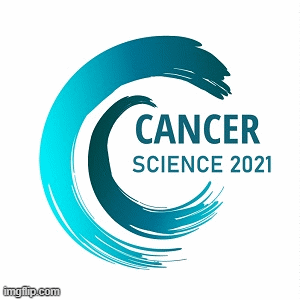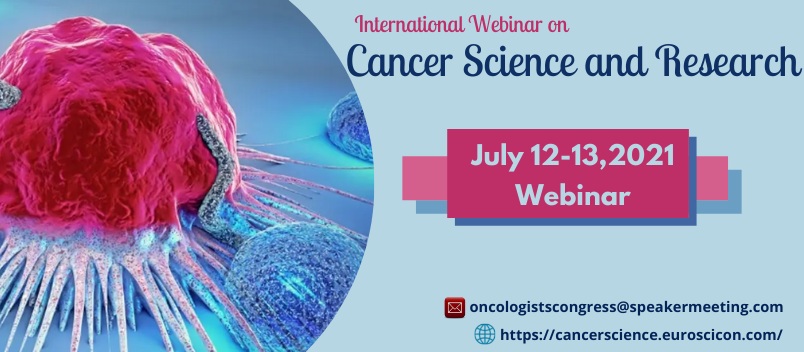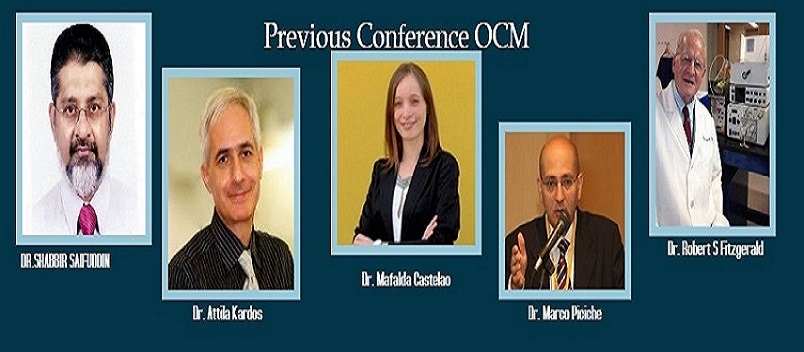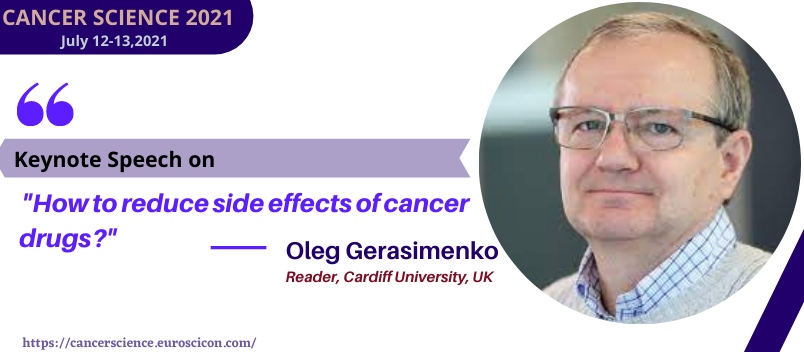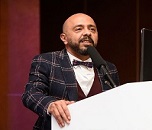Cancer Science 2021
ABOUT CONFERENCE
We are glad to announce the International Conference on Cancer Science and Research (Cancer Science 2021) organized in collaboration with generous support and cooperation from enthusiastic academicians and Editorial Board Members scheduled on July 12-13, 2021.
Cancer Science 2021 aims at sharing new ideas and technologies amongst the professionals, industrialists and students from research areas of Oncology and Cancer. As the premier event, we have developed a program with your interests in mind. We have not only increased the number of opportunities for you to network with colleagues from across the world but also introduced more focused sessions that will feature cutting-edge presentations, special panel discussions, and livelier interaction with industry leaders and experts.
Cancer Science 2021 invites all the participants from all over the world which includes prompt Keynote talks, Oral talks, Poster presentations, Sponsor Ships and Exhibitions. The aim of this conference is “Cancer Research Strengthening to fight against Cancer”.
Cancer Science Conferences 1000+ CME Global events every year across the globe with support from 1000+ more scientific societies and Publishes 500 Open access journals which contains over 50000 eminent personalities, reputed scientists as editorial board members.
Who Should Attend??
Cancer Science 2021 conference is a novel discussion to unite overall recognized scholastic Researchers, Public wellbeing experts, Scientists, Doctors, Academic researchers, Industry specialists, Scholars in the field of Oncology, Hematology, Surgery, Nursing, Radiology, Pediatric, Physicians, Advocacy, etc., to exchange about the state of the Research and Development.
Target Audience:
- Doctors
- Oncologists
- Directors
- Cancer Surgeons
- Physicians
- Oncology Nurses & Nurse Practitioners
- Oncology Associations and Societies
- Business Professionals
- Medical colleges and universities
- Professors
- Researchers & Scientists
- Anesthesiologists
- Medicine Experts
- Manufacturing Nano Medical Devices Companies
- Students
Why Should Attend??
The arranging group assembles eminent speakers covering the most recent advances in the field, fusing differing qualities in each sense. We likewise incorporate talks on most recent methodologies for concentrating these biological inquiries.
Exclusive B2B meetings, Interactive Sessions, Panel Discussions, Keynote Sessions, Poster Presentations, Oral Presentations, Workshops, Exhibitions etc., are the main highlights of this event.
Scope & Importance:
Cancer Science 2021 and Oncology webinars will seam world-class educators, scientists and Oncologists to converse diverse procedures for Cancer treatment, Chemotherapy, and Radiology.
Cancer Science 2021 will be the best platform for all the oncologists, hematologists, research scholars, students who are working in this field to exchange their knowledge related to Oncology Research. This international event is an effort to understand the underlying biological procedures which are amended to increase effectiveness, precision, survivability and quality of life.
Overview of Cancer Science 2021:
The Innovative idea of Cancer has started great much research to be embraced by the labs around the world. With such an extraordinary number of researchers and scientists taking a shot at Caner research, to date, no significant solution for this is recorded. Cancer Science 2021 will manage Cancer Prevention, Diagnosis, and Treatment of illnesses of the Organ-related Cancers and its inventive strategies. Cancer Science 2021 will also supply the two days of discussions on methods and systems identified with administration and satisfactory exchange of Cancer and in addition to check out the new thoughts and ideas on worldwide scale and the themes include Cancer Cell Biology & Genetics, Oncologic Subspecialties, Cancer & Stem Cell Therapy, Cancer Metastasis, Clinical Oncology, Cancer Molecular Diagnostics, Cancer Immunology and Immunotherapy, Neuro-Oncology, Gynaec- Oncology, Hemato- Oncology, Oncolytic Virus and Cancer, The COVID Challenge: Oncology, Radiology and Imaging Current Technologies, Surgical Oncology, Cancer Chemotherapy, Pharmaceutical Oncology, Pediatric Oncology, Cancer Nanotechnology, Pathophysiology in Cancer, Cancer Nursing, Cancer: Complementary & Alternative Treatments, Cancer: Life Style Connection, Nutrition & Patient Support, Advances in Cancer Research And Treatment, Clinical Case Reports On Cancer Research, Current Research in Cancer.
SESSIONS & TRACKS
Track-1: Cancer Cell Biology & Genetics
Cell division could be a traditional method utilized by the body for growth and repair. Healthy cells stop dividing once there's not a requirement for additional female offspring cells; however cancer cells still turn out copies. Cancer cells square measure cells that divide unrelentingly, forming solid tumors or flooding the blood with abnormal cells. Cancer biology deals with these changes and also the molecular networks that management cell proliferation, differentiation and death. The study of varied styles of cancer is termed as medical specialty.

- Cancer metabolomics
- Regenerative cell biology
- Host-pathogen interactions
- Sarcoma
- Renal Cell Carcinoma
Track-2: Oncologic Subspecialties
There are several sub-specialties in the field of Oncology. The above mentioned specialties deal with the treatment of cancer through Chemotherapy or Immunotherapy, Biopsies and Radiology respectively.
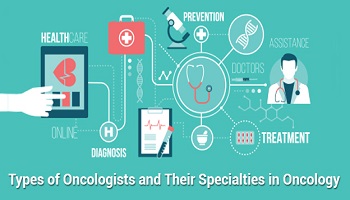
- Neuro-oncology
- Ocular oncology
- Head & Neck oncology
- Thoracic oncology
- Breast oncology
- Gastrointestinal oncology
- Bone & Musculoskeletal oncology
- Dermatological oncology
- Genitourinary oncology
- Adolescent and young adult (AYA) oncology
- Hemato-oncology
- Molecular oncology
- Onco-pathology
- Nuclear medicine oncology
- Veterinary oncology
- Cardio Oncology
- Computational Oncology
- Exercises Oncology
- Psycho-Oncology
Track-3: Cancer & Stem Cell Therapy
A stem cell is a cell with the unique ability to develop into specialized cell types in the body. In the future they may be used to replace cells and tissues that have been damaged or lost due to disease.
In stem cell transplants, stem cells replace cells damaged by chemotherapy or disease or serve as a way for the donor's immune system to fight some types of cancer and blood-related diseases, such as leukemia, lymphoma, neuroblastoma and multiple myeloma. These transplants use adult stem cells or umbilical cord blood. Stem cells are not only widely used for regenerative medicine, but are also considered as a useful tool for cancer treatment. For a long time, stem cells have been utilized to renew the immune system for radiation or chemo- therapy treated patients.

The spread of cancer from one part of the body to another part or to lymph nodes, which are not directly connected to each other is called cancer metastasis. Cancer is considered as a deadly disease mainly because of its ability to spread in the body. This metastasis takes place through the blood stream or the lymph system. The most common metastasis parts of the body are the lungs, bones, liver and brain. The metastatic cancer cells does not resemble the feature of the cells where it was found but it resembles the primary cancer cells i.e. it was considered as a next stage of the primary cancer cells. All metastatic cancers are considered as advanced cancers. The cancer survival and treatment is influenced by whether the cancer cells are localized or spreads to other parts. When the cancer starts to spread it is very difficult to control. Even if the treatment is continued, it will be only palliative care. The pain killing will be mostly by Anti-cancer drugs such as chemotherapy. Cancer Management is a multidisciplinary approach that deals with the various type of cancer complications and its preventive measures. Cancer Conferences is an important key for both educational and clinical guidance for managing cancer patients.
Clinical oncologists are doctors who treat patients with a balance of radiotherapy and chemotherapy. They are involved in the management of all types of cancer and use a range of other treatments to treat cancers, without using surgery.
They are different than medical oncologists, who use non-radiological treatments for cancer. Clinical oncologists determine which treatment to use by considering a range of factors such as the type of tumor, tumor site, the stage of the disease and the patient’s general health. They assess the relative merits of different treatments before presenting these to the patient.

Track-6: Cancer Molecular Diagnostics
Molecular diagnostics can be used to determine whether a person is at risk for a certain type of cancer. When used this way, the tests may also be referred to as molecular profiling or molecular risk assessment. These tests help a person determine how likely he or she is to develop cancer.
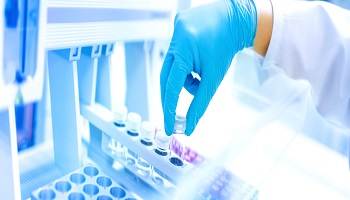
Track-7: Cancer Immunology And Immunotherapy
Cancer immunology is a stream of immunology that studies communications between the immune system and cancer cells (also called tumors or malignancies). It is a field of research that intent to discover cancer immunotherapies to treat and decelerate evolution of the disease. The human immune system mounts natural endogenous response to foreign cells. The gamut of genetics and epigenetics changes occurring in tumors provides diverse set of antigenic repertoire that host’s immune system can exploit to distinguish tumour versus their normal healthy counterparts.
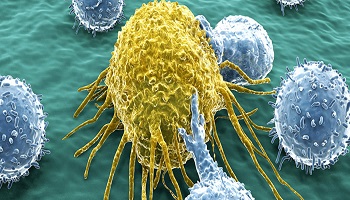
- Cancer Antigens & Vaccines
- Host-Tumor Relation
- Clinical Cancer immunology
- Cellular Immunotherapy
- Antibody Therapy
In biology, cell signaling is part of any communication process that governs basic activities of cells and coordinates multiple-cell actions. The ability of cells to perceive and correctly respond to their microenvironment is the basis of development, tissue repair, and immunity, as well as normal tissue homeostasis. Errors in signaling interactions and cellular information processing may cause diseases such as cancer, autoimmunity, and diabetes. By understanding cell signaling, clinicians may treat diseases more effectively and, theoretically, researchers may develop artificial tissues.

All cells receive and respond to signals from their surroundings. This is accomplished by a variety of signal molecules that are secreted or expressed on the surface of one cell and bind to a receptor expressed by the other cells, thereby integrating and coordinating the function of the many individual cells that make up organisms. Each cell is programmed to respond to specific extracellular signal molecules. Extracellular signaling usually entails the following steps:
- Synthesis and release of the signaling molecule by the signaling cell.
- Transport of the signal to the target cell.
- Binding of the signal by a specific receptor leading to its activation.
- Initiation of signal-transduction pathways.
Contaminations in the female genitalia and the extra sex organs are regularly known as Gynecologic Infectious Diseases. A portion of the irresistible infections is Vulvovaginitis, Cervicitis, Pelvic Inflammatory Diseases, and Sexually Transmitted Diseases. Gynecologic Oncology is a specific field that arrangements with growths relating to the female genitalia and conceptive framework.
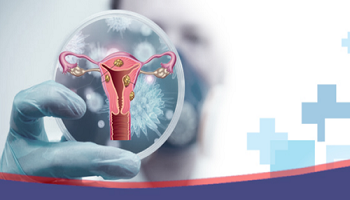
- Oncology Rehabilitation for Cancer
- Gynaecologic and Obstetrics Pathology
- Polycystic ovary syndrome
- Vulvovaginitis
- Cervicitis
- Pelvic Inflammatory Diseases
- Sexually Transmitted Diseases
A hematologist-oncologist is a physician, specializes in diagnosing, treatment and prevention of blood diseases and cancers such as iron-deficiency anemia, hemophilia, sickle-cell disease, leukemia and lymphoma. This physician is trained in hematology — the study of blood — and oncology — the study of cancer.
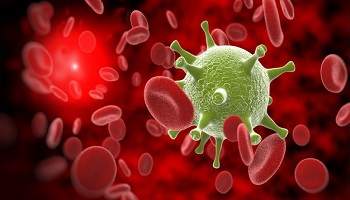
Track-11: Oncolytic Virus And Cancer
An oncolytic virus is a virus that preferentially infects and kills cancer cells. As the infected cancer cells are destroyed by oncolysis, they release new infectious virus particles or virions to help destroy the remaining tumor. Oncolytic viruses are thought not only to cause direct destruction of the tumor cells, but also to stimulate host anti-tumor immune system responses. The potential of viruses as anti-cancer agents was first realized in the early twentieth century, although coordinated research efforts did not begin until the 1960s. A number of viruses including adenovirus, reovirus, measles, herpes simplex, Newcastle disease virus, and vaccine have been clinically tested as oncolytic agents. Most current oncolytic viruses are engineered for tumor selectivity, although there are naturally occurring examples such as reovirus and the Seneca virus, resulting in clinical trials.
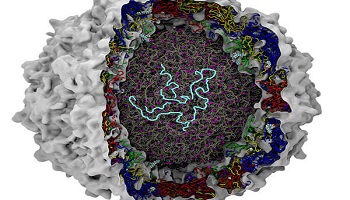
- Oncolytic behaviour of wild-type viruses
- Bio-engineered oncolytic virus for the treatment of cancer
- Recently approved therapeutic agents
Track-12: The COVID Challenge: Oncology
The recent Chinese experience suggests that cancer patients are at higher risk of infection to SARS-CoV-2 compared to the general population, which could be related to the closer medical follow-up organized in such fragile patients. More concerning, the risk of severe respiratory complications requiring intensive care unit was much higher in cancer patients compared to non-cancer patients. A covariate significantly associated with this risk was a history of chemotherapy or surgery in the previous months, a feature that involves the highest number of cancer patients. Finally, the cancer patients deteriorated more rapidly than those without cancer.
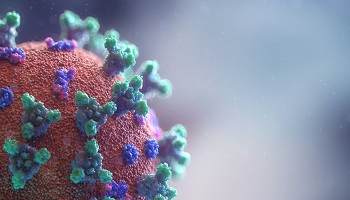
Track-13: Radiology And Imaging Current Technologies
Radiology is the medical discipline that uses medical imaging to diagnose and treat diseases within the bodies of both humans and animals. A variety of imaging techniques such as X-ray radiography, ultrasound, computed tomography (CT), nuclear medicine including positron emission tomography (PET), and magnetic resonance imaging (MRI) are used to diagnose or treat diseases. Interventional radiology is the performance of usually minimally invasive medical procedures with the guidance of imaging technologies such as those mentioned above.

Surgical oncology is the branch of surgery applied to oncology; it focuses on the surgical management of tumors, especially cancerous tumors.
As one of several modalities in the management of cancer, the specialty of surgical oncology, before modern medicine the only cancer treatment with a chance of success, has evolved in steps similar to medical oncology (pharmacotherapy for cancer), which grew out of hematology, and radiation oncology, which grew out of radiology.

Cancer cells keep growing without control. Chemotherapy is drug therapy for cancer. It works by killing the cancer cells, stopping them from spreading, or slowing their growth. However, it can also harm healthy cells, which causes side effects. Cancer can be treated by surgery, chemotherapy, radiation therapy, hormonal therapy, targeted therapy and synthetic lethality.

- Cancer Targeted therapy
- Cell-based therapy
- Hormonal therapy
- Cancer Curative treatment
- Cancer Palliative treatment
- Limitations of Chemotherapy
- Cancer Therapeutics, Novel and experimental approaches
- Adverse effects of chemotherapy
Track-16: Pharmaceutical Oncology
A multidisciplinary way to deal with redesign has been connected in a variety of settings in clinical oncology, especially among patients with stomach and colorectal malignancy. Cancer has one of the highest mortality rates of all diseases worldwide. As a pre-treatment prior to hematopoietic progenitor cell transplantation carried out as a part of treatment for all forms of blood cancer, this drug is contributing to patients as a necessary drug that ranks alongside radiation therapy. Hepatitis B antibody was disease counteractive action antibodies upheld Drug Administration (FDA). Disease treatment immunizations were likewise considered restorative antibodies.

- Theoretical Medicines
- Anti-Metabolite Drugs
- Drug interactions
- Alkylating Agents
- Microtubule Inhibitor
- Steroid Hormones
Pediatric Oncology is the term used to comprise all malignant conditions among neonates & children with cancer. The most common childhood cancers are, Neuroblastoma, Retinoblastoma, Wilms tumor and brain tumors, such as gliomas. Childhood cancers are very rare and may differ from adult cancers in the way they grow, spread, treated, and respond to treatment.
- Clinical Paediatrics
- Genetics in Paediatric Oncology
- Paediatric Nutrition
- Paediatric Radiology
- Pediatric Oncology Nursing
- Integrative Pediatric Oncology
- Palliative Care in Pediatric Oncology
Track-18: Cancer Nanotechnology
Cancer nanotechnology is a branch of nanotechnology concerned with the application of both nanomaterial (such as nanoparticles for tumor imaging or drug delivery) and nanotechnology approaches (such as nanoparticle-based theranostics) to the diagnosis and treatment of cancer.
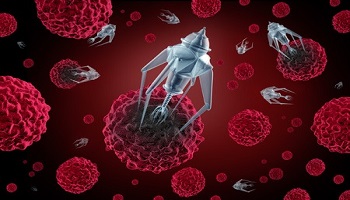
Track-19: Pathophysiology In Cancer
Pathologists are among the most important members of a patient’s cancer care team. They work to diagnose and determine the stage of cancer, setting the course for what comes next in the treatment journey. Pathology is the service that handles the blood samples and the cells and tissues removed from suspicious ‘lumps and bumps’. Cancer pathology’s key role in diagnosing and treating a complex disease, it’s important to stay up to date on new technologies and breakthroughs that continue to shape the ever-evolving landscape of cancer care.
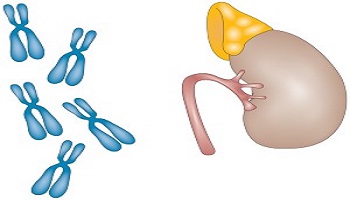
- Cancer Epigenetics
- Onco-genomics
- Anatomical Pathology
- Pathology in cancer diagnostics
- Cancer Cytopathology
Oncology Nursing is a field including practice incorporates the jobs of direct guardian, instructor, specialist, head, and scientist. Oncology nursing care can defined as meeting the various needs of oncology patients during the time of their disease including appropriate screenings and other preventative practices, symptom management, care to retain as much normal functioning as possible, and supportive measures upon end of life. Cancer Summit 2019 will make another transformation in malignancy science and disease nursing field.

- Nutritional care
- Supportive Care
- Management & Palliative Care
- Assessing Physical & Emotional Status
- Treatment Plans
- Symptom Management
- Direct Patient Care
Track-21: Cancer: Complementary & Alternative Treatments
Complementary and alternative are terms used to describe many kinds of products, practices, and systems that are not part of mainstream medicine. You may hear them used to refer to methods to help relieve symptoms and improve quality of life during cancer treatment. We call these “complementary” because they are used along with your medical treatment.
- Aromatherapy
- Ayurveda
- Art & Music Therapy
- Homeopathic Medicines
- Anti-Cancer Agents in Medicinal Chemistry
Track-22: Cancer: Life Style Connection, Nutrition & Patient Support
Many factors impact the development of cancer. Over the last 25 years, science has displayed that diet,body weight and physical activity —especially being overweight or obese—are leading risk factors for obtaining certain types of cancer. The main behavioral and environmental risk factors for cancer death in the world are related to diet and physical inactivity, use of addictive substances, sexual and reproductive health and exposure to air pollution and use of contaminated needles.

Track-23: Advances In Cancer Research And Treatment
Instruments are designed to aid in the diagnosis, monitoring or treatment of medical conditions. Several new types of equipment are used in the treatment of cancer such as:
Linear Accelerator (LINAC) – It emits radiation of highly localised (X-rays) and it is useful in the treatment of cancer. The 6 MeV linear accelerator having the capability of surface electron allows treating cancer cells even under the subcutis layer overlying the cranium. The patient can also see his activity through the connected display unit.
Gamma Camera – It is used in the detection of cancer via gamma rays. Here tracers used are introduced into the patient’s body intravenously, thus getting the image on the gamma camera as the tracer emits gamma rays which are detected by the gamma camera.
Radiography and Ultrasound – It is a non-invasive way of getting the image of the internal organs by ultrasound. It is a useful method for cancer patients for examining the abdomen for any enlargement of the lymph or masses.
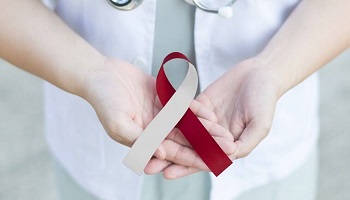
- Targeting the DNA Damage Response to Generate New Cancer Therapies
- Preclinical & Clinical Research
- Early Detection Research
- Immuno-prevention
Track-24: Clinical Case Reports On Cancer Research
A case study is a research method involving an up-close, in-depth, and detailed examination of a concerned case (subject/topic), as well as its related contextual conditions. Case studies can be produced by a formal research method followed by an individual, organization, event, or action, existing in a specific time and place. Here we are inviting case studies based on any types of cancer or related incidents or events with facts and figures. Presenting your studies on any other type of cancer in this category will privilege you with a 30% discount on registration.
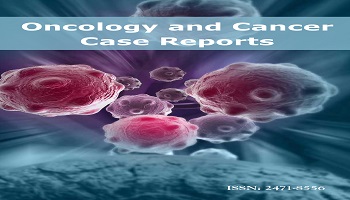
Track-25: Current Research In Cancer
Leukemia, Lymphoma, Germ cell tumors and early stage solid tumors which were once incurable have become curable malignancies now. Immunotherapies have already proven efficient in leukemia, bladder cancer and various skin cancers. For the future, research is promising in the field of physical oncology. Survival of cancer has significantly improved over the past years due to improved screening, diagnostic methods and treatment options with targeted therapy. Large multi-centric Phase III randomized controlled clinical trials by the National Surgical Adjuvant Breast & Bowel Project (NSABP), Medical Research Council (MRC), and the European Organization for Research and Treatment of Cancer (EORTC) and National Cancer Institute (NCI) have contributed significantly to the improvement in survival.

MARKET ANALYSIS
As per Centers for Disease Control and Prevention (CDC), chronic HBV affected almost 1.4 million of the US population in 2011 and acting as major public health challenge. In past couple of years outbreaks for different infections have deteriorated the situation. All these reports direct towards the increasing need for immunological diagnosis and treatment for infections across the world. Therefore the market for this infection oncology may grow with significant rate in near future. On the other hand high cost involved and limited reach of this technology may hinder the growth of the market.

However the growth of the market may be significant in emerging economies in Asia and Africa considering high incidence and prevalence rate for infections. This market can also be segmented according various categories of infections such as hepatitis viruses, retroviruses and other infections. The market has different classes of products used such as reagents, diagnostic kits, instruments and others.
Precision Medicine Market size was over USD 39 billion in 2015, and is anticipated to grow at 10.5% CAGR from 2016 to 2023.
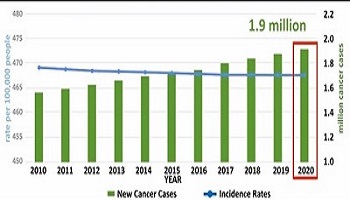
Statistics of Physicians, Researchers and Academicians working on Molecular Medicine and Oncology section.
Academia 35%
Researchers 35%
Physicians 25%
Others 5%
Cancer Drug Market: Overview
Development of some new drugs with success rate is expected to offer the good opportunity for oncology drug market. Wide-ranging scope of cancer immunotherapy agents in different cancer treatments would provide the maximum share to oncology drug market in the forecast period. Pharmaceutical companies and R&D are showing increased interest in this field and is expected to offer better potential for oncology drug market. Companies involved in partnership and R&D for efficient technologies is some of the latest trends that have been observed in oncology drug market. Currently, most of the cancer drugs are in clinical trial and are expected to rise the oncology market after clearance or success of these products from clinical trials.
Growth rate of Cancer Science and research:
A new report from business intelligence provider GBI Research - Global Oncology Market to 2022 - states that the global oncology treatment market is set to expand from the $61.5 billion in 2015 to an estimated $74.2 billion in 2022, despite the imminent expiry of a host of cancer treatments.
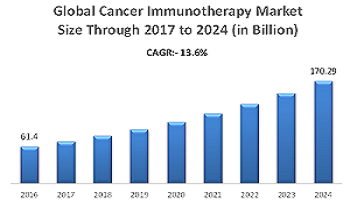
Cancer Drug Market: Key Market Participants
Currently various established companies in diagnostic and healthcare segment catering varied range of products such as reagents, test kits and instruments in this market out of which companies such as F. Hoffmann-La Roche Ltd., Abbott Laboratories, Shanghai Kehua Bio-engineering Co., Ltd, Trans Asia Bio-Medicals Ltd, Span Diagnostics Ltd, Thermo Fisher Scientific Inc., Bio-Rad Laboratories, Inc. are leading contributors in reagents and test kits, on the other hand Siemens Healthcare and PerkinElmer, Inc. are major companies in Instruments segment.
This research report analyzes this market on the basis of its market segments, major geographies, and current market trends.
LEARN MORE
The age-standardized rate for all cancers (including non-melanoma skin cancer) for men and women combined was 197.9 per 100,000 in 2018. The rate was higher for men (218.6 per 100,000) than women (182.6 per 100,000).
With the burden growing in almost every country, prevention of cancer is one of the most significant public health challenges of the 21st century. Around 40% of cancer cases could be prevented by reducing exposure to cancer risk factors including diet, nutrition and physical activity – for more information see our Cancer Prevention Recommendations or read our blog.
Reducing the cancer burden requires concerted and integrated action from all sectors of society, including civil society, private sector, and health and other professions. You can read what policy actions different countries are taking to promote healthier diets in our NOURISHING framework and accompanying database.
Age-standardized rates are used in the tables. This is a summary measure of the rate of disease that a population would have if it had a standard age structure. Standardization is necessary when comparing populations that differ with respect to age because age has a powerful influence on the risk of dying from cancer.
- The highest cancer rate for men and women together was in Australia, at 468.0 people per 100,000.
- The age-standardized rate was at least 320 per 100,000 for 12 countries: Australia, New Zealand, Ireland, Hungary, the US, Belgium, France (metropolitan), Denmark, Norway, the Netherlands, Canada and New Caledonia (France).
- The countries in the top 12 come from Oceania, Europe and North America.
Cancer associations all over the world:
- AIM at Melanoma
- American Brain Tumor Association
- American Cancer Society
- American Childhood Cancer Organization
- American Council on Life Insurers
- American Lung Association
- American Psychosocial Oncology Society
- American Society of Clinical Oncology
- Angel Flight America
- Association of Oncology Social Work
- Bladder Cancer Advocacy Network
- Bone Marrow & Cancer Foundation
- BreastCancer.org
- Bright Pink
- Cancer Care
- Cancer and Careers
- Cancer Hope Network
- Cancer Legal Resource Center
- Cancer Research and Prevention Foundation
- CaringBridge.org
- Care Pages
- Caring Info
- Centers for Disease Control and Prevention Cancer Information
- Centers for Medicare and Medicaid Services
- Center for Mind-Body Medicine
- Children’s Cause for Cancer Advocacy
- Chronic Disease Fund
- Center for Cancer Research
- Clinical Trials
- Colon Cancer Alliance
- Co-Pay Relief Program
- Corporate Angel Network
- Coverage For ALL
- Crush It For Curtis Foundation
- Emerging med
- Facing Our Risk of Cancer EMPOWERED (FORCE)
- Family Caregiver Alliance
- Feeding America
- Fight Colorectal Cancer
- Head and Neck Cancer Alliance (HNCA)
- Health Resources and Services Administration
- Health Well Foundation
- Imaginary Friend Society
- Inflammatory Breast Cancer Research Foundation
- Intercultural Cancer Council
- International Myeloma Foundation
- International Waldenstrom’s Macroglobulinemia Foundation
- Joe’s House
- Kidney Cancer Association
- Leukemia and Lymphoma Society
- Living Beyond Breast Cancer
- Lung Cancer Alliance
- LUNG evity Foundation
- Lymphoma Research Foundation
- Melanoma Research Foundation
- Men against Breast Cancer
- Meta Cancer Foundation, Inc.
- Multiple Myeloma Research Foundation
- Mylifeline.org
- National Brain Tumor Society
- National Breast Cancer Coalition
- National Cancer Institute
- National Center for Complementary and Alternative Medicine
- National Cervical Cancer Coalition
- National Children’s Cancer Society
- National Coalition for Cancer Survivorship
- National Energy Assistance Referral
- National Hospice and Palliative Care Organization
- National Lymphedema Network
- National Marrow Donor Program
- National Organization for Rare Disorders
- National Ovarian Cancer Coalition
- National Patient Travel Center
- Native American Cancer Research
- Needy Meds
- Nueva Vida
- Office of Minority Health
- Onco link
- Oncology Nursing Society
- Oral Cancer Foundation
- Ovarian Cancer National Alliance
- Pancreatic Cancer Action Network
- Partnership for Prescription Assistance
- Patient Access Network Foundation
- Patient Advocate Foundation
- Patient Services, Inc. (PSI)
- Prostate Cancer Foundation
- The Prostate Net
- Rosalynn Carter Institute for Caregiving
- Sisters Network
- Skin Cancer Foundation
- Social Security Administration
- State Health Insurance Assistance Programs (SHIP)
- Survivorship A to Z
- Support for People with Oral and Head and Neck Cancer (SPOHNC)
- Susan G. Komen Breast Cancer Foundation
- Thyroid Cancer Survivor’s Association
- Together Rx Access
- The Ulman Cancer Fund for Young Adults
- United Way
- Uniting Against Lung Cancer
- US TOO International Prostate Cancer Education & Support Network
- Vital Options International
- Woman Lab
- Young Survival Coalition
- Zero - The Project to End Prostate Cancer
List of Cancer Hospitals all over the world:
- Alvin J. Site man Cancer Center
- Antoni van Leeuwenhoek ziekenhuis
- Cancer Institute Hospital of JFCR
- City of Hope National Medical Center
- Cross Cancer Institute
- Dharamshila Cancer Hospital and Research Centre
- Docrates Cancer Center
- Dr. B. Borooah Cancer Institute
- Finsen Laboratory
- Fox Chase Cancer Center
- Fuda Cancer Hospital-Guangzhou
- Homi Bhabha Cancer Hospital & Research Centre
- Huntsman Cancer Institute
- Institute of Cancer of São Paulo
- Integris Cancer Institute
- The James Cancer Hospital
- John Stoddard Cancer Center
- Kanagawa Cancer Center
- Kidwai Memorial Institute of Oncology
- King Hussein Cancer Center
- Mahavir Cancer Institute and Research Centre
- Malabar Cancer Centre
- Mary Bird Perkins Cancer Center
- Memorial Sloan Kettering Cancer Center
- H. Lee Moffitt Cancer Center & Research Institute
- National Institute of Cancer Research and Hospital
- New York Cancer Hospital
- Onco care
- Peter Mac Callum Cancer Centre
- Princess Margaret Cancer Centre
- Radium hemmet
- Rajiv Gandhi Cancer Institute and Research Centre
- Reno Cyber Knife
- Royal Marsden Hospital Seton Healthcare Family
- Shanghai Cancer Center
- Sun Yat-sen University Cancer Center
- Tata Memorial Centre
- Tom Baker Cancer Centre
- UCSF Bakar Cancer Hospital
- UCSF Helen Diller Family Comprehensive Cancer Center
- University of Florida Cancer Hospital
- University of Michigan Rogel Cancer Center
- University of Texas MD Anderson Cancer Center
- Vattikuti Urology Institute
- Velindre Cancer Centre
- Victorian Comprehensive Cancer Centre
- Win ship Cancer Institute
- Zhejiang Cancer Hospital
No. of deaths caused by cancer, World 2019 statistics:
Cancer is a generic term for a large group of diseases that can affect any part of the body. Other terms used are malignant tumors and neoplasms. One defining feature of cancer is the rapid creation of abnormal cells that grow beyond their usual boundaries, and which can then invade adjoining parts of the body and spread to other organs, the latter process is referred to as metastasizing. Metastases are a major cause of death from cancer.
Cancer is the second leading cause of death globally, and is responsible for an estimated 9.6 million deaths in 2018. Globally, about 1 in 6 deaths is due to cancer.
Approximately 70% of deaths from cancer occur in low- and middle-income countries.
Around one third of deaths from cancer are due to the 5 leading behavioral and dietary risks: high body mass index, low fruit and vegetable intake, lack of physical activity, tobacco use, and alcohol use.
Tobacco use is the most important risk factor for cancer and is responsible for approximately 22% of cancer deaths.
Cancer causing infections, such as hepatitis and human papilloma virus (HPV), are responsible for up to 25% of cancer cases in low- and middle-income countries.
Late-stage presentation and inaccessible diagnosis and treatment are common. In 2017, only 26% of low-income countries reported having pathology services generally available in the public sector. More than 90% of high-income countries reported treatment services are available compared to less than 30% of low-income countries.
The economic impact of cancer is significant and is increasing. The total annual economic cost of cancer in 2010 was estimated at approximately US$ 1.16 trillion.
Only 1 in 5 low- and middle-income countries have the necessary data to drive cancer policy.
Cancer is a leading cause of death worldwide, accounting for an estimated 9.6 million deaths in 2019. The most common cancers are:
- Lung (2.09 million cases)
- Breast (2.09 million cases)
- Colorectal (1.80 million cases)
- Prostate (1.28 million cases)
- Skin cancer (non-melanoma) (1.04 million cases)
- Stomach (1.03 million cases)
- The most common causes of cancer death are cancers of:
- Lung (1.76 million deaths)
- Colorectal (862 000 deaths)
- Stomach (783 000 deaths)
- Liver (782 000 deaths)
- Breast (627 000 deaths)
World Wide Cancer Universities:
List of Cancer University in USA:
- Stanford University
- Johns Hopkins School of Medicine
- UCSF School of Medicine
- Duke University
- Yale School of Medicine
- Harvard Medical School
- UNC School of Medicine
- UT South western Medical School
- The University of Chicago Pritzker School of Medicine
- Maryland School of Medicine
- University of Cincinnati Academic Health Centre
- University of Wisconsin School of Medicine
- University of Minnesota Medical School
- Stony Brook School of Medicine
- Vermont College of Medicine
- International Medical Conferences
- International Medical Conferences
- Wayne State School of Medicine
- Emory University: School of Medicine
- University of Utah School of Medicine
- Vanderbilt University
- Penn State Hershey College of Medicine
- Alabama School of Medicine
- UMASS School of Medicine
- Rutgers New Jersey Medical School
- Oklahoma College of Medicine
List of Cancer University in Europe:
- ESO - European School of Oncology
- Kharkiv National Medical University
- Cardio-Oncology Conferences
- Medical University – Plovdiv
- Medical University – Pleven
- Bukovinian State Medical University
- KU Leuven – University of Leuven, Belgium
- Technical University of Munich
- Humboldt University of Berlin
- University of Amsterdam
- Erasmus University Rotterdam
- Leiden University
- RWTH Aachen University
- University of Groningen
- Utrecht University
- University of Tübingen
- Yerevan State Medical University
- University of Copenhagen
- Maastricht University
- Medical University of Vienna
- University of Milan
- University of Barcelona
List of Cancer University in Asia:
- University of Tokyo
- National University of Singapore
- Kyoto University
- University of Hong Kong
- Peking University
- Seoul University
- National Taiwan University
- Osaka University
- Tsinghua University
- Duke-NUS Medical School
- Asian Medical Institute
- International Medical University
- Taipei Medical University
- Allianze University College of Medical Sciences
- Mahidol University
- Herat University Faculty of Medicine
- Karaganda State Medical University
- Perdana University Graduate School of Medicine
- Chongjin Medical University
- Nanyang Technological University
List of Cancer University in Africa:
- Makerere University
- University of Ghana at Legon
- University of Nairobi
- University of Ibadan
- University of Botswana
- University of Lagos
- Cheikh Anta Diop University
- University of Dar Es Salaam
- University of Cape Town
- Stellenbosch University University of Pretoria
- Cairo University
- University of Witwatersrand
- University of Kwazulu-Natal
- University of Western Cape
- Mansoura University
- University of Johanessburg
- Orotta School of Medicine
- Addis Ababa University
- Aga Khan University Medical School
- Egerton University Medical School
- University of Malawi College of Medicine
- Ambrose Alli University
- Walter Sisulu University
- Busitema University School of Medicine
World Wide Oncology and Cancer Based Companies
List of Oncology and Cancer based Companies in the USA:
- Gilead Sciences, Inc.
- AMGN
- Biogen, Inc.
- Celgene Corporation
- Regeneron Pharmaceuticals, Inc.
- Alexion Pharmaceuticals Inc.
- Vertex Pharmaceuticals
- Illumina
- BioMarin Pharmaceutical Inc.
- Agilent Technologies, Inc.
- Flatiron Health
- Epizyme
- ARMO BioSciences
- Guardant Health
- Tesaro
- Mersana Therapeutics
- CytomX Therapeutic
- Edico Genome
- Raze Therapeutics
- G1 Therapeutics
- Agenus Inc.
- Personal Genome Diagnostics (PGD)
- VentiRx Pharmaceuticals
List of Oncology and Cancer Based Companies in Europe:
- Sanera Pharmaceuticals
- Aromics
- Kuzey Pharma
- Remedica Ltd
- Azanta
- Bone Therapeutics
- Iteos Therapeutics
- Regenesys (Athersys)
- Linatech
- Dandrit Biotechnology
- Dako (Agilent)
- H-Immune
- Pierre Fabre
- Oncodesign
- Anagenesis Biotechnologies
- Aratinga Bio
- Genclis
- Vaxon Biotech
List of Oncology and Cancer Based Companies in Asia:
- Shionogi Pharmaceutical Research Facility
- Taiyo Pharmaceutical Industry
- Wu Xi Biologics’ Perfusion Biologics
- Nippon Shinyaku Corporation
- Medlac Pharmaceutical Plant
- Lonza Niacinamide Production Facility
- Kemwell Biopharmaceuticals Inc.
- Hanmi Pharmaceutical's New Bio Manufacturing Plant
- Boehringer Ingelheim
- Wu Xi Biologics’ Perfusion Biologics
- Pfizer’s Global Biotechnology Centre
- GlaxoSmith Kline’s (GSK) Pharmaceutical Inc.
- Affymetrix Inc
- Daiichi Pharmaceutical Company
- Merck Serono’s Pharmaceuticals
- Novartis Institute of BioMedical Research
- Searle Pharma Medication Production Plant
- GE Healthcare Shanghai Pharmaceutical Manufacturing Plant
- AstraZeneca Pharmaceutical Manufacturing Plant
List of Oncology and Cancer Based Companies in Africa:
- Enaleni Pharmaceuticals Ltd
- Amalgamated Pharmaceuticals
- Dibana Pharmaceuticals
- Abbott Laboratories SA
- Teva Pharmaceuticals Ltd
- Amka Pharmaceuticals Ltd
- Medimoc Sarl
- AstraZeneca Pharmaceuticals Ltd
- Lilly Oncology - Lilly South Africa
- Warren Chem Pharmaceuticals
- Biotech Laboratories Ltd
- Janssen Pharmaceuticals
- Axim Pharmaceuticals
- Keko PharmaceuticalIndustries Ltd
- Pharmed Pharmaceuticals
- Embassy Pharmaceuticals
- S D V Pharmaceuticals
- Georen Pharmaceuticals Ltd
- Allied Drug Company Ltd
World Wide Cancer Journals
List of Cancer Journals in USA:
- Cancer Cell
- Journal of Clinical Oncology
- Journal of the National Cancer Institute
- Stem Cells
- Cancer
- Molecular Cancer Therapeutics
- International Journal of Radial Oncology Biology Physics
- Journal of the National Comprehensive Cancer Network
- Advances in Cancer Research
- Oncotarget
- Journal of Cancer Survivorship
- Cancer Prevention Research
- Journals of Thoracic Oncology
- Current Opinion in Oncology
- Cancer Control
- Cancer Cytopathology
List of Cancer Journals in in Europe:
- Lancet Oncology
- Drug Resistance Updates
- Breast Cancer Research
- European Journal of Cancer
- Nature Reviews Clinical Oncology
- British Journal of Cancer
- Blood Reviews
- Molecular Cancer
- Endocrine-Related Cancer
- Psycho-Oncology
- Pigment Cell and Melanoma Research
- Cancer Science
- Environmental Carcinogenesis and Ecotoxicology Reviews
- Journal of Hematology and Oncology
List of Cancer Journals in Asia:
- Asian Pacific Journal of Cancer Prevention
- Asian Pacific Journal of Cancer Prevention
- The Japanese Association of Medical Sciences
- Angiogenesis in Multiple Myeloma: Implications in Myeloma Therapy
- Lymphoma in Asia
- Arsenates in the Treatment of Hematological Malignancies
- Endoscopic Diagnosis and Treatment for Early Gastric Cancer
- Asia Pacific Journal of Public Health
- Liver Cancer
List of Cancer Journals in Africa:
